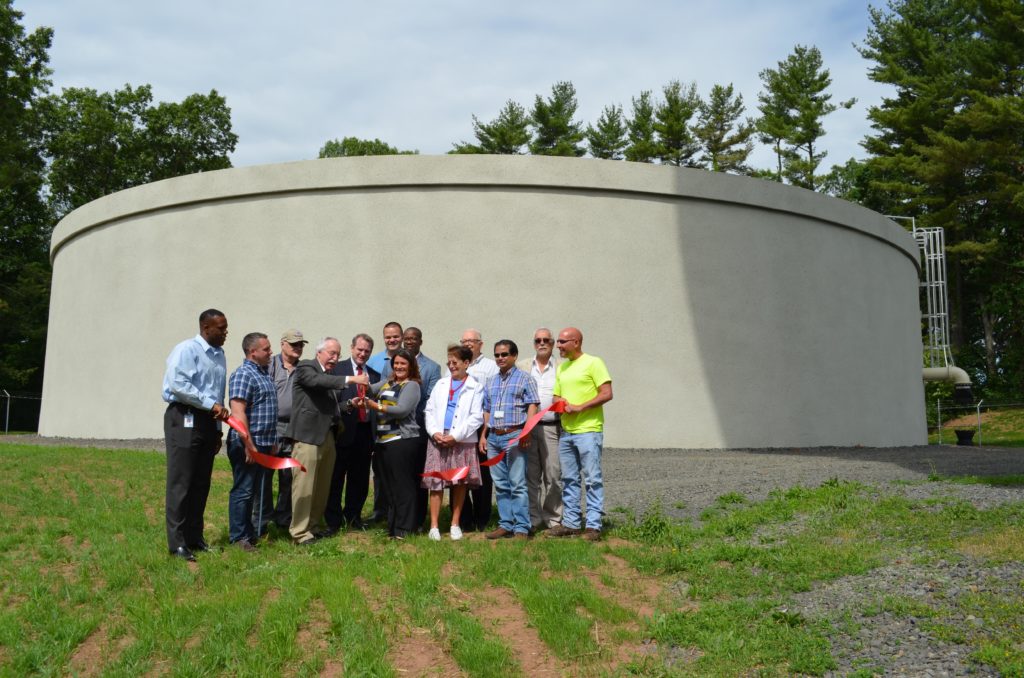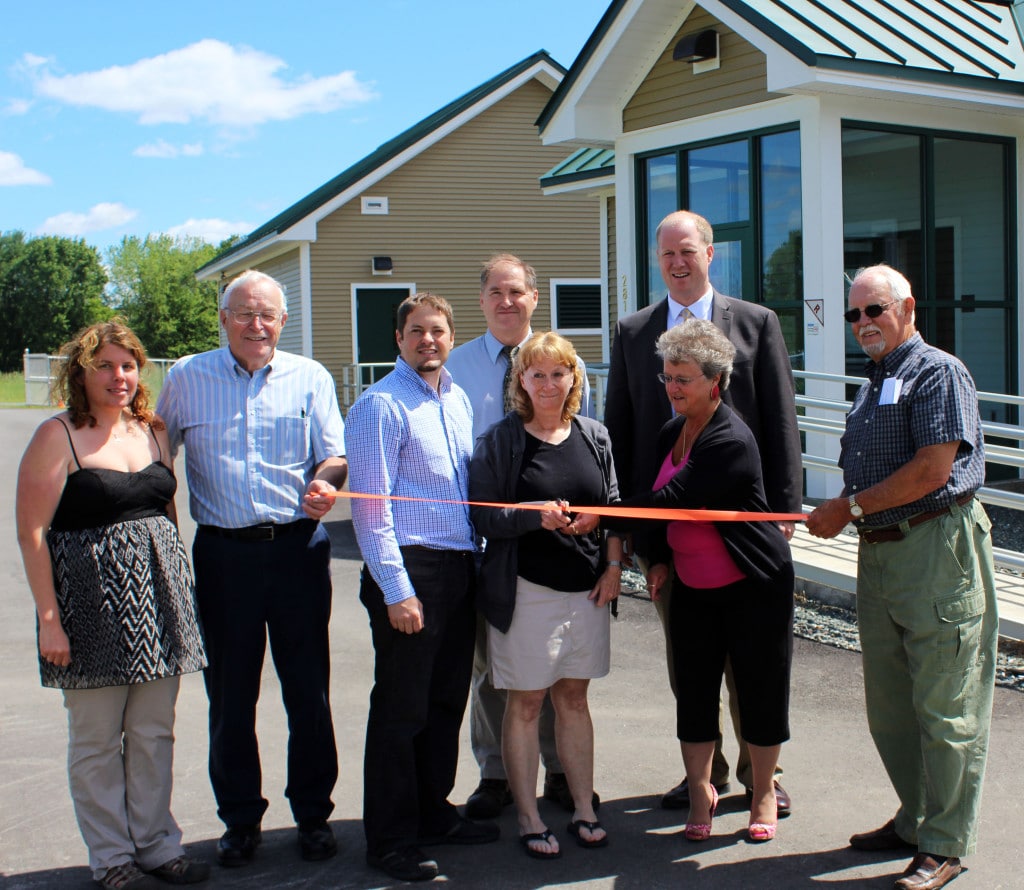
On Friday, June 17, 2016, New Britain Mayor Erin E. Stewart hosted a ribbon cutting ceremony to mark the completion of the construction of the new Elam Street water storage tank. In addition to Mayor Stewart, other attendees included Director of Utilities Gilbert Bligh, Raul Tejada from the Connecticut Department of Public Health, and Tata & Howard Vice President Steve Rupar, P.E.
Tata & Howard provided design, bidding, construction administration, and resident observation services for this important New Britain Water Department Project. The new 2.0 million gallon, precast, prestressed, wire-wound, concrete water storage tank replaces an existing deteriorated 4 million gallon water storage tank constructed in 1956. The project also included construction of approximately 450 linear feet of new 16-inch diameter water main, mechanically cleaning and cement mortar lining approximately 430 linear feet of 20-inch diameter main, upgrades to the Corbin Avenue Pump Station and West Main Street Gatehouse, and demolition of much of the existing water storage tank. The lower portion of the existing water storage tank was repurposed as a drainage and overflow retention basin for the new storage tank. Construction of the $3.3 million project was funded through the Drinking Water Revolving Fund, administered by the Department of Public Health.

